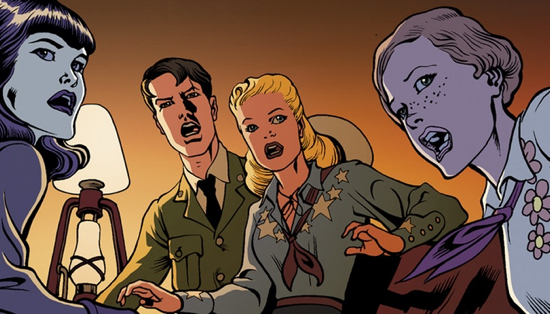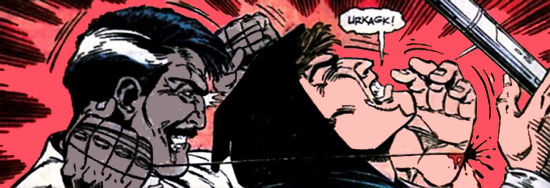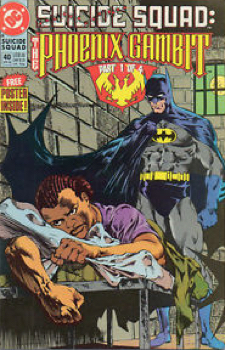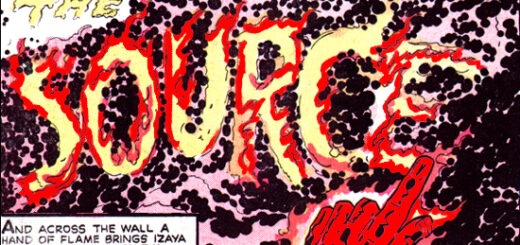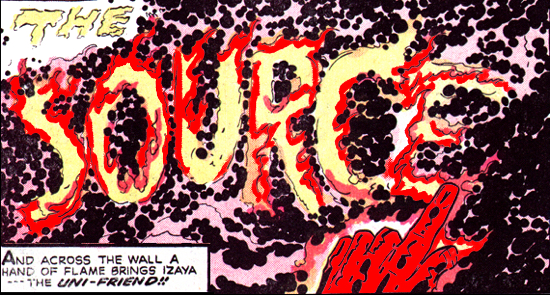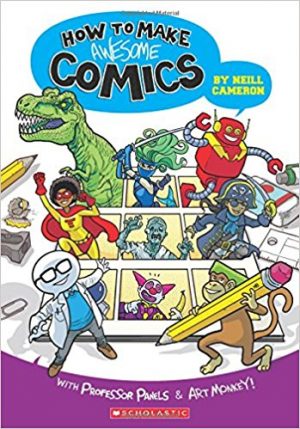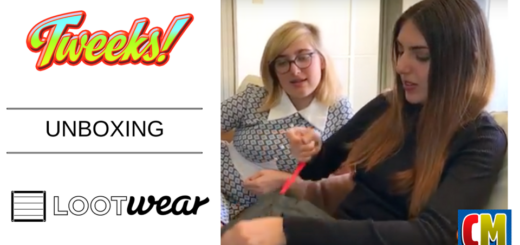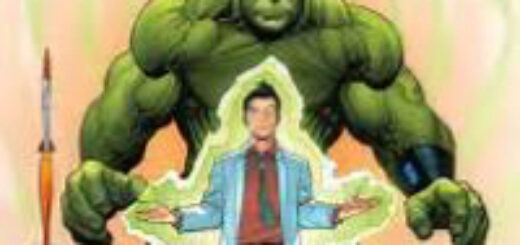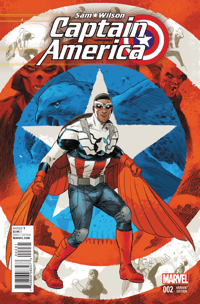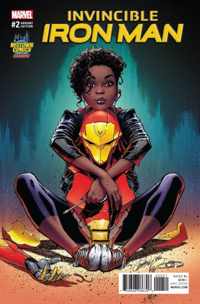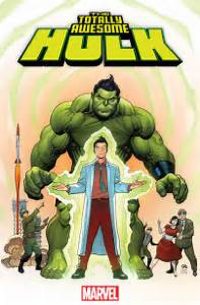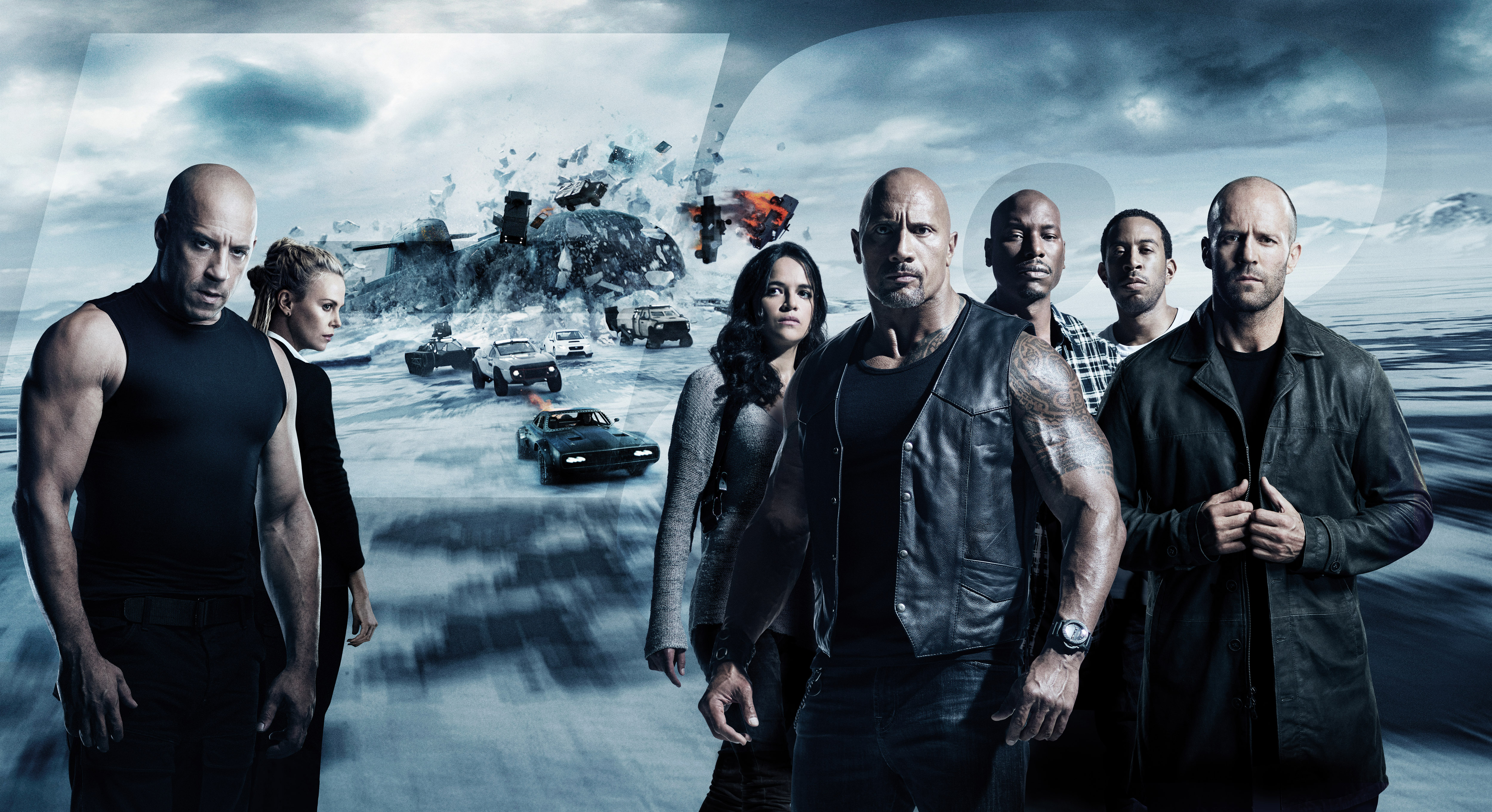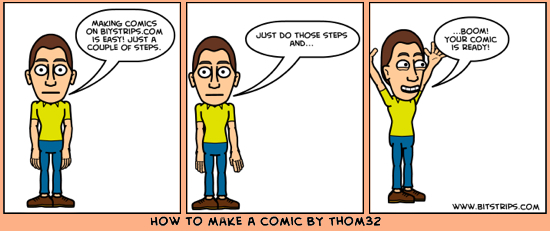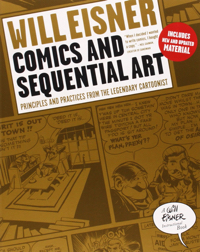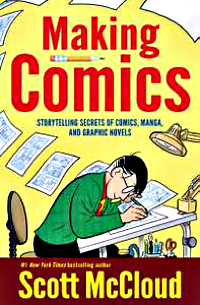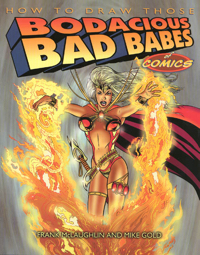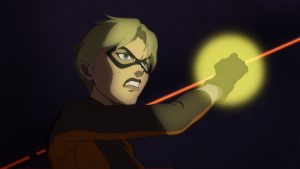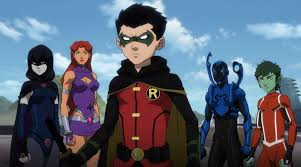Ed Catto: The Cutie & the Indefatigable Entrepreneur
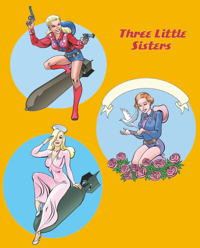 I’ve listened to many podcasts during the long upstate winter and one of my favorites has been Karina Longworth’s You Must Remember This. It’s billed as a storytelling podcast exploring the secret and/or forgotten histories of Hollywood’s first century. I enjoy it because Longworth spins great yarns, with vivid insights, about Hollywood stars and their careers.
I’ve listened to many podcasts during the long upstate winter and one of my favorites has been Karina Longworth’s You Must Remember This. It’s billed as a storytelling podcast exploring the secret and/or forgotten histories of Hollywood’s first century. I enjoy it because Longworth spins great yarns, with vivid insights, about Hollywood stars and their careers.
But I think there’s more to why it’s popular and why I enjoy it so much. I’m starting to realize that the inevitable ups and downs of yesteryear’s Hollywood Stars are analogous to the rollercoaster rides that categorize so many of today’s careers.
It’s astounding to hear about how a legendary star’s career might have floundered at one point, only to do a complete 360 as he or she gets cast in a successful blockbuster movie. Thundering successes and crushing failures become the tales told time and time again on You Must Remember This.
I believe that it’s optimism and hope that fuels our passions for Hollywood heroes and that keep us believing in ourselves too.
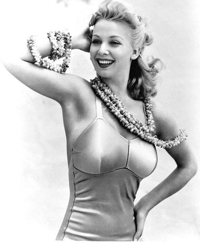 Longworth told the tragic tale of Carole Landis in one particularly memorable episode. I wasn’t familiar with Landis. In fact, the thing that drew me to that episode is the fact that Landis strongly resembled a friend of mine, Rosie McCooe, who’s also an actress.
Longworth told the tragic tale of Carole Landis in one particularly memorable episode. I wasn’t familiar with Landis. In fact, the thing that drew me to that episode is the fact that Landis strongly resembled a friend of mine, Rosie McCooe, who’s also an actress.
The tale of Carole Landis is especially heartbreaking, and when you’re in the right frame of mind, I’d encourage you to listen to the episode here.
As I listened to the podcast, I was fascinated with Carole’s volunteer efforts during World War II. In fact, she played herself in a Four Jills in a Jeep, a movie that detailed her wartime experience.
Having learned about Carole Landis’ USO efforts, I was especially intrigued when my friend, Sean Dulaney, reached out to tell me about this latest project, Miss Vicky and Her Commando Cuties. In some alternate universe, Carole Landis would play the lead in the cinematic version of this upcoming graphic novel.
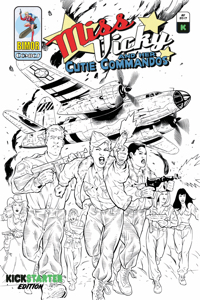 Sean’s an indefatigable, creative entrepreneur who’s always got something going on. I’m at the point now, and maybe you are too, where I admire the guys who have the internal motivation to keep getting up to bat and to take a swing as much as I admire the guys who hit the homers.
Sean’s an indefatigable, creative entrepreneur who’s always got something going on. I’m at the point now, and maybe you are too, where I admire the guys who have the internal motivation to keep getting up to bat and to take a swing as much as I admire the guys who hit the homers.
So, as you can see from the text below, I was eager to learn about this new project.
Ed Catto: Miss Vicky and Her Cutie Commandos looks like so much fun. What’s it all about?
Sean Dulaney: It’s the adventures of an all-female commando unit in World War II who operate using the cover of being USO-style entertainers to get them close to the front lines. They’ve been operating for a while when the story opens and we meet Lt. Thomas Hardy, our P.O.V. character. He’s a young guy who got a battlefield promotion, but what got the attention of higher-ups with the OSS is he grew up with four older sisters. His job is to serve as the girls’ liaison with Military Intelligence, his cover being that of their manager. He gets the orders from the higher ups, but Vicky is the one in charge. I’ve used the elevator pitch “Sgt. Fury in a skirt,” and that’s a good way to describe her and the series. Stan Lee’s old tagline of a “war comic for people who hate war comics.” Six women of different backgrounds, different talents, brought together to try and make the world safe for democracy.
EC: Is this something that just came up or have you been working on it a while?
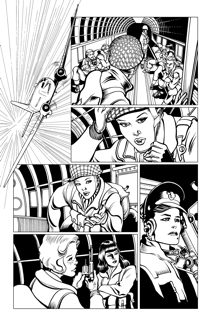 SD: Miss Vicky and Her Cutie Commandos has been gestating for a while now. I think the initial pitch with Stephen Molnar (Danger Girl and Star Trek for IDW) on art was put together in 2006/2007. We had some nibbles and a tentative agreement in place with Praxis Comics at the New York Comic-Con in 2008, but I don’t think they were around too long after that. A few other Indies expressed interest, but the deals offered just didn’t feel right to us at the time. Shortly after that, Stephen got snapped up for some Marvel assignments and then IDW grabbed him and kept him busy. After letting it sit for a while, Tony Lee helped me find Ron Joseph and I shopped his version of the pitch a bit. Again, interest but not any great offers. When I decided to go ahead and just bite the bullet and self-publish, IDW was keeping Ron busy so I recruited Eliseu who I had been wanting to work with since the Digital Webbing days.
SD: Miss Vicky and Her Cutie Commandos has been gestating for a while now. I think the initial pitch with Stephen Molnar (Danger Girl and Star Trek for IDW) on art was put together in 2006/2007. We had some nibbles and a tentative agreement in place with Praxis Comics at the New York Comic-Con in 2008, but I don’t think they were around too long after that. A few other Indies expressed interest, but the deals offered just didn’t feel right to us at the time. Shortly after that, Stephen got snapped up for some Marvel assignments and then IDW grabbed him and kept him busy. After letting it sit for a while, Tony Lee helped me find Ron Joseph and I shopped his version of the pitch a bit. Again, interest but not any great offers. When I decided to go ahead and just bite the bullet and self-publish, IDW was keeping Ron busy so I recruited Eliseu who I had been wanting to work with since the Digital Webbing days.
EC: Are the main characters based on real women?
SD: Yes and no. One of the lines I had written down was “Pin Up Commandos” and some of the initial character design directions I gave the artists for inspiration were 40s pin-ups and actresses. Vicky, the leader, I saw as a mix of Betty Grable and Bette Midler in “For The Boys.” June’s backstory was she was supposed to be the next Josephine Baker before the Nazis invaded Paris. Loraine has the smoky blonde Veronica Lake/Lisbeth Scott vibe mixed with the Varga Girls. Annie Sue is a cross between a teenaged Shirley Temple and the Gil Elvgren models. Betsy, the British member, has a touch of Caniff’s “Miss Lace” character he did for military papers and Roz… She may be the most modern influenced of the six. A mix of Lanie Kazan and Stockard Channing.
Since I’m shopped the pitch around, I’ve had people mention the story of Carole Landis and I can see some similarities with her group of entertainers.
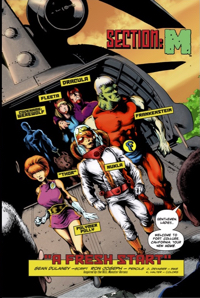 EC: The art looks strong and engaging. But I’m not familiar with your artist.
EC: The art looks strong and engaging. But I’m not familiar with your artist.
SD: Yeah, Eliseu Gouveia is the artist for the project. I’ve known him from the Digital Webbing message boards going back to 2001 – 2002. In fact, the first “Dreah, Queen of Thieves” story from Digital Webbing Presents #12 was written for Eliseu, so we’ve been trying to work together for a while. I’ve amazed, and rather fortunate, that he hasn’t been snapped up by a major publisher here in the states. He’s done some stuff here and there like Genie for FC9 and Palmiotti and Gray’s Cloudburst for Image (I think Arcana has released the trade on that one), but being in Portugal I think he’s been off the radar of a lot of people but I can see that changing soon. He recently released his own Jungle Queen Sheva via ComiXology.
I also want to mention Jasen Smith who’ll be doing the colors on the book. He’s doing great work.
EC: As a big Sgt. Fury and His Howling Commandos fan, I can see some similarities. Did that series, often marketed as “The war comic for people how hate war comics” influence you?
SD: I think Kirby and Lee’s Sgt. Fury (and the later Gary Friedrich/John Severin run) ranks with a lot of other media as part of the prototype the book was built on. The Sgt. Fury book, The Dirty Dozen, Hogan’s Heroes… even Simon and Kirby’s Boy Commandos I think can be found in this book’s DNA. Even more obscure stuff like the 70s TV show The Goodtime Girls, Tales of the Gold Monkey from the 80s and the BBC’s ‘Allo ‘Allo are in there. Honestly, I came in late to Sgt. Fury, as I was more of a DC kid growing up and the War titles I would pick up were Our Fighting Forces with the Losers and Unknown Soldier.
Sgt. Fury and Hogan’s Heroes did something back in the 60s that now would be seen as trying to be politically correct in having members of different races and nationalities as part of the unit. Those books and shows are so ingrained in the 50+ years since they debuted; it’s hard to imagine them without Percy and Gabe or Newkirk and Kinchloe. In our case, we have Betsy and June, who each have great backstories that I hope we get to explore.
EC: More recently, I really enjoyed Jonathan Case’s The New Deal. Did that graphic novel influence you? And what other recent GN’s have influenced your efforts.
SD: Actually, I haven’t gotten to check it out. To be honest, my current reading list isn’t always that “current.” I try to keep up with books my friends are working on, but I don’t get out to the comic shops as regularly as I’d like, so I wind up playing a lot of catch up.
EC: The Kickstarter looks pretty cool too. How did you make the decision to launch it via Kickstarter and how is this one structured?
SD: As Kickstarter became more viable, it was always an option. The problem was trying to figure out the rewards. With Eliseu in Portugal, original art and rewards like that would have some serious shipping expense. We’ve not ruled out maybe some sketch cover commissions once we get into stretch goals, but they weren’t a default reward option like they’ve been on some campaigns. I looked into having some artist friends doing sketch covers, but schedules were a bear to coordinate.
In the end, we’re keeping it pretty straightforward. We have the first issue, physical and/or digital. We have a short story with guest artists doing pin-ups and the pin-ups are also collected as a portfolio option. I love the pin-up art painted on the nose of bombers, so we designed stickers of the girls in that style. We’ve got four variant cover options, Stephen and Ron signed off on the covers they did for their versions of the pitch to be variants and another Digital Webbing alum, Chad Hardin (DC’s Harley Quinn) will be doing a cover for the “Director’s Cut” edition.
We’ve also set up a special “Retailer Tier” for shop owners who might want to take a chance on putting Miss Vicky on their wall where they’ll get standard and sketch blank copies along with a retailer incentive cover edition. The stretch goal rewards…well, let’s hit the original goal first.
EC: This graphic novel looks like it might reach out to and appeal to classic Pin-Up fans. Is that your intent?
SD: Oh, definitely. I think Dave Stevens opened the door for that cross-pollination of comics and pin-up cultures and it’s only been in the last couple of years that the major publishers really embraced that market with things like DC’s Bombshells. I hope pin-up fans will take a chance on the title, enjoy what we’re doing and want us to do more.
EC: I’ve been fascinated with your work on the Dell superhero monsters. Can you tell me a little about those efforts?
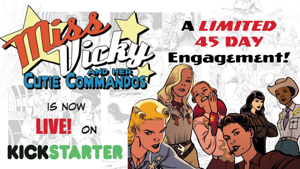 SD: The initial response to the Miss Vicky campaign pretty much guarantees that my next Kickstarter will be Section: M.
SD: The initial response to the Miss Vicky campaign pretty much guarantees that my next Kickstarter will be Section: M.
The readers are going, “What the hell is Section: M?” It’s a super hero team book featuring the 1966 monster heroes published by Dell Comics during the post-Batman ‘66 super hero craze. Ron Joseph is the penciller on the book and the premise is the heroes went on a mission around 1968/1969 and wound up in suspended animation, only to wake up in the 21st Century. Because they’ve all been lost in time, they are kind of stuck together as they fight crime and try to adjust to the modern world.
EC: What else should I know about Miss Vicky and her Cutie Commandos?
SD: The campaign runs through May 30th, the day after Memorial Day, and folks can check it out here.
EC: Thanks for your time and good luck, Sean!


